Children should receive certain skills and knowledge from parents. All mothers and fathers should know about how to teach a child to read correctly at home using the ABC book or using other methods. This skill will help the baby to more easily perceive the world around him, adapt at school, gain knowledge in other subjects. There are different methods of teaching children to read. Find out about their features.
How to teach a child to read correctly and quickly
Some parents believe that only specialists should deal with the baby, but this opinion is erroneous. Knowing a few secrets, showing perseverance and patience, you will teach the baby the basics of quick reading on their own at home. With such skills, it will be much easier for a child to adapt in society, he will master the school curriculum much faster.
When to teach a child to read
Previously, this skill was instilled in children only at school, in extreme cases, in kindergarten, i.e. not earlier than five years of age. Now times have changed and it is recommended that children start learning from almost the first year of life. How can parents make sure the baby’s psychological and physical readiness to deal with:
- A good sign is that a child at an early age is interested in children's books.
- The kid should own the speech, understand the meanings of simple words, be able to formulate sentences, express thoughts with phrases, perceive information and sounds in a phonemic way.
- The child knows the basic directions (up-down, left-right), can navigate in space.
- The baby has good hearing, there are no serious problems with pronunciation and other developmental abnormalities. If you have speech defects, make an appointment with a speech therapist.
What alphabet to learn
As a rule, a classic primer and some other materials are used for classes: posters, cubes, cards. Many parents, having tried modern techniques, return to teaching reading in the usual way. You can purchase a primer designed by Natalya Zhukova. This teacher offers a learning method that combines classic and original approaches.
Basic Reading Techniques
It is worth noting that some of the actions of parents can kill a person’s interest in books for a lifetime. How to teach a child to read:
- Never force. Try to interest the child by telling interesting stories. Read him aloud, set your own positive example, so you will teach him faster. Do not force the child and do not swear if he makes mistakes. Praise your baby for success.
- First, learn to perceive sounds, and only then move on to the letters of the alphabet.
- Engage in mastering syllables. So learning letters will be easier.
- Repeat this material regularly. It is better to do it in a playful way, do not arrange tests, because it can be offensive.
- First learn the simplest words with repetitive warehouses (ma-ma). Then you can move on to more complex tasks. A syllable-letter scheme (co-t, d-m) will do. When the kid learns the technique of reading words, teach elementary, and then complex sentences. Enter exercise c, b, b most recently. This is a very simple mechanism for learning to read aloud.
- For a walk, ask your child to say what is written on signs, billboards, so you will quickly teach him to read.
- Choose games for the knowledge of individual letters. Buy alphabet cubes.
- Do not teach the names of letters ("er", "es"). He can distort words later.
- Practice every day to teach you how to read. Do not give up lessons, even if you think that the baby already knows everything.

Methods of teaching a preschooler to read at home
There are different schemes for studying with children proposed by specialists. Parents are advised to study in detail the features of each of the methods, choose their preferred and engage only in it. If you use several training schemes, you can simply confuse the baby, discourage his desire to learn. Check out a few popular ways to learn early.
The technique of Maria Montessori
The Italian teacher suggests starting the study with writing. Maria Montessori advises children to capitalize. Techniques such as stroke, hatching should be used. Then you need to proceed to the manufacture of letters from bulk materials, for example, plasticine. Drawings and mock-ups need to be composed, folded letters, and at the last stage to pronounce syllables.
Methodology of Nikolai Zaitsev
One of the most popular ways to learn, providing fast results. Perfect for active kids. Training is conducted in cubes with warehouses. There are those on which one letter, and those on which two. They are colorful. Golden cubes with vowels. Those in which voiced warehouses are gray are called iron. Brown wooden cubes contain hollow syllables, and white and green cubes contain punctuation marks. For simplicity of perception, all of them have different content, weight and size.
All classes with cubes according to the method of Zaitsev are conducted only in a game form. Included are tables with warehouses, which should always be in sight, and examples of special exercises. Warehouses need to be collected according to certain principles, to sing, to imitate the sounds of animals. You can invent games yourself, along with the baby, relying on what will be more interesting to him.
Glenn Doman's Technique
It is aimed at mastering not sounds and syllables, but immediately whole words. They are written on special picture cards. Parents should show each of them to the child for 15 seconds, loudly explaining the meaning. The first lessons should be very short, no longer than 5-10 minutes. Advantages of an effective Doman technique:
- suitable for children from birth;
- you can use an individual approach, to form a specific vocabulary;
- comprehensively develops;
- material can be done independently.
The Doman system is not without its number of shortcomings. Teachers distinguish such its disadvantages and shortcomings:
- the learning process is passive;
- not perceived by children older than three years.

Where to start teaching a child to read
Be sure to select the appropriate teaching aids. Use books, posters, cards and cubes. Training Stages:
- Introduce your kid to open vowels. Say them and chant.
- After the initial step, go to the voiced consonant.
- Remember the muffled and hissing sounds. Only then can you move on to learning to read syllables. Remembering letters, not sounds, can be difficult in the future.
- Teach your kid to make syllables from two vowels. He must understand how sounds connect.
- Go to syllables in which the first letter is consonant and the second vowel. It will be easy.
- Fold syllables with sizzling.
- Go to closed warehouses (vowel-consonant).
Teaching a child to read in a playful way
Having fun, it’s easiest for a kid to instill an interest in books. There are many game techniques aimed at developing a reading technique:
- Learn short verses about letters together.
- Make the letters yourself. To learn the alphabet, collect them from improvised materials: plasticine, counting sticks, matches. You can cut them out of cardboard and paste them with colored paper.
- Create an album in which each page becomes a “home” for the letter. Glue pictures with words that begin with it.
- Select the letter you are studying. Throw a baby ball and name the words. If he hears the desired sound in them, let him catch the ball, and if not, he will beat him off.
- Make round cards with syllables and play in the “Shop”. Each warehouse is a coin. The buyer gives one of them and orders from the seller the goods that begin with this syllable (ba - banana, ku - doll).
- Write the card stores in large bold. Cut each horizontally and mix. Let the child gather all the halves and read the syllables.
- Give the kid a long word. Let him find in it a few small ones.
- Make syllable cards. Show your child a picture of a particular word. Let it be composed of syllables.
How to learn to read syllables
Experts recommend starting to do this right away, the child does not even need to know all the sounds. Then the learning process will go much faster. Use game techniques, various supporting materials. If the baby confidently makes warehouses, proceed to the stage of collecting words. Remember how to properly teach your child to read syllables. Classes should be held in the sequence described below.
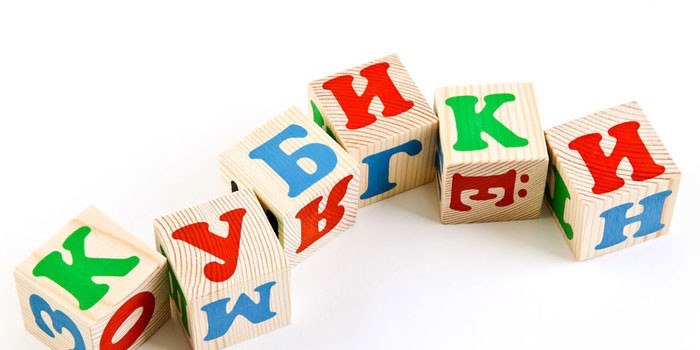
Syllable Reading Lessons
The process must be consistent. What are the stages of learning to read syllables:
- Compose simple words from repeating syllables (pa-pa) first. Watch the pronunciation.
- Go to easy and clear words of three or four letters (le, s, le).
- The process is getting complicated. Teach your child to read words from three or more syllables (ko-ro-va). It is advisable to deal with pictures.
- Go on reading simple sentences (ma-ma we-la ra-mu).
How to teach a child to read not by syllables
Combining words into words takes a lot of time and attention in children. Parents should teach the child to read fluently, pronounce syllables together, learn the text well and perceive it whole. There are such methods for this:
- Reading for speed. Choose texts that are appropriate for the child’s age, and note how much he can read per minute. Then let him retell the summary of the text.
- Shuffle the words in the sentence and let the child compose it correctly. Start with simple examples.
- Role reading. Choose a children's story. Let the child voice one hero, and you another. Read the roles. This will help the baby choose the right intonation, keep the rhythm, pause in the right places, understand the meaning.
- Difficult words. Every day, let the baby read 2-3 times about 30 words, in which there are many difficult combinations of consonants.
- Develop lateral vision and logical thinking, train memory, correct pronunciation, speed of reading.
- Eliminate speech therapy and other problems.
No one disputes that the skills of quickly adding letters to words and then to sentences are the basis for gaining knowledge. While the baby is confused in the text, not understanding what is written there, he will not be able to master the material, to understand what is required of him. Each parent who encounters a problem thinks about how to teach the child to read quickly. Grade 1, as they say, on the nose, it's time to do something. Many believe that this is precisely where the school exists: teachers will do everything. But, as practice shows, the child is not always able to read normally by the end of the first year of schooling. There are many reasons for this, and it is not always necessary to blame the teacher for lack of professionalism. But let's talk about everything in order.
Approach features
Figuring out (Grade 1), you need to start with the nature of your child. An assiduous and nature-conscious baby is much easier to captivate with the process than a mobile and scattered egoza. These are not at all flaws, but rather features of perception. It is necessary to start from them as from the initial conditions when solving the problem. Then your words: “Now we are learning to read!” will be perceived with pleasure, not with tears. So, you need to observe and find out the better motivate the child. Then choose the right technique from those described below. Naturally, everything will not work right away. You will have to try, allocating a certain time every day for the acquisition of skills. With the right approach, you yourself will be surprised that in a couple of days your favorite offspring will pester you with the question: "Learning to read?"

Process involvement
Now we turn directly to the methods of solving the question of how to teach a child to read quickly. Grade 1 is only the beginning, the first step to a huge array of knowledge. A student falls in a waterfall of information! But first-graders are still small children. It’s hard for them to just sit a lesson, not to mention everything else. Parents advice: remember those times when you were put in prison for a boring alphabet! How hard it was (for almost everyone). Free your favorite child from such memories. Nothing yet better games did not come up. The kid must be one hundred percent sure that he is not learning, but having fun. The methods are simple: let your favorite bear sit down with you and read faster than a child. Arrange competitions. Or ask questions, the answers to which are in the text. If the child is interested, then he will not notice the difficulties. Such light learning games are recommended from the very beginning, that is, from the period of recognition of letters. If you yourself can’t think of anything, then buy a book of special poems. There are such. A quatrain is dedicated to each letter in them (sometimes, not one). Then such a plan. You exclaim: "Learning to read letters"! When attention is fixed, the first thing is the quatrain. Then comes the letter. After a while (rather quickly), the baby will learn them all: both letters and poems. Then you can arrange a guessing game. So the material is fixed.
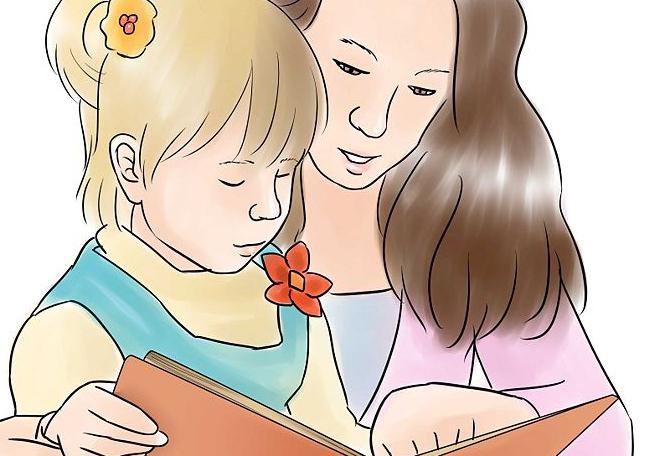
The next step is syllables.
Having learned the letters, the baby does not immediately learn to fold them. The fact is that this is already a completely different process. When planning how to teach a child to read quickly (Grade 1), keep in mind that you will have to overcome two main obstacles: find the right incentive and overcome syllables. Moreover, according to the observations of teachers, the second is much more complicated. At school, the child will be told how to put two letters in a word. At home, you must repeat what you have learned. Do not let things go by themselves! Start with the simplest. Try to put together 2 letters: yes, ma, pa and so on. Then move on to short words in which only one sound changes (whale, cat). See how the baby quickly learns "cunning letter writing." This step is perhaps the most difficult. After this, the process will go easier, and you can teach your child to read in syllables.
Parallel reading
This method is used so that the baby observes how you are reading with an example. We do so. We take two identical texts (it is possible those that are divided into syllables) and we read it ourselves, and the child swipes a finger along the text. Then switch roles. You can involve toys or animals in the process. The main thing is that interest is not lost. This method, if you learn it together, will come in handy later on. It is used to speed up reading. As noted, the child should begin to be taught when interest in letters wakes up. Everything has its time. You need to understand when your baby is inspired by the call: "Learning to read!". 5 years to him or more - it does not matter. Is the child interested? Get started!
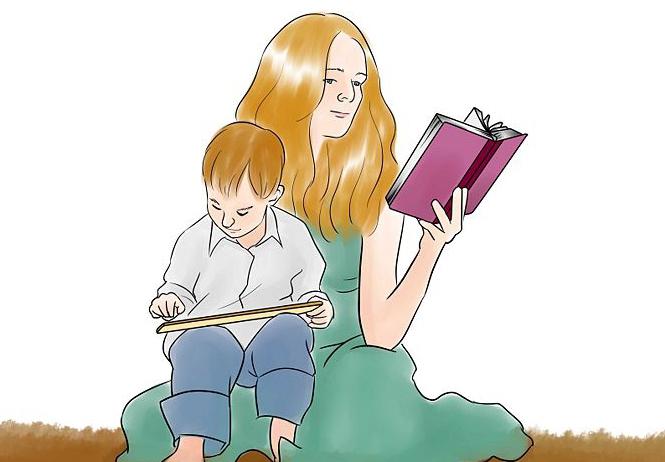
Household use
The next step to stimulate the process is the organization of “absolutely necessary” correspondence. These are also peculiar games: we learn to read by syllables. Only games that have a purely practical value. For example, when leaving for the store, do not tell the baby where you are going, but write. Let him do it soon. You will see for yourself how quickly he learns not only to decipher your messages, but also to answer them with his own. It’s good if you can involve all family members in this process. Let the child parses notes from dad, brother, grandmother, bugs and so on. In the process of developing skills, practice is important. It needs to be organized.
Fascinating comics and filmstrips
Another fascinating activity that helps to teach children to read. Games are good, they just get bored quickly. See for yourself how long your baby can do the same thing. As a rule, no more than half an hour. It is recommended to change the exercise. In our case, it can be useful to watch filmstrips, comics, slides. In the end, if there is no necessary equipment, they can be quickly typed on a computer using pictures. It is important that they are accompanied by inscriptions convenient for the baby's perception. First syllable, then whole words and sentences. It should be ensured that the child does not just read, but also tells what the inscription is about. Here already begins. After all, our goal is not just to teach reading, but to teach to perceive information.
We overcome natural obstacles
Among the difficulties that the baby will encounter are “stumbling” about several consonants standing together. This must be overcome, as they say, in the bud. There is a special exercise. You need to write these every day and ask the child to read. They should be changed periodically, because the baby will quickly memorize them. Therefore, it is important to toss him new tasks. To get comfortable, try writing a series of consonants, including one vowel. Let him try to decide which letter is superfluous. Naturally, the row needs to be changed every time. When the child has mastered this exercise, let him complete the tasks for you, dad, grandmother, and so on. And it’s okay if he can’t write. There are letters on magnets for this.

Hiking and walking
It is possible to instill skills in a child not only during the game. “Learning to read” - such a proposal will work anywhere, especially in a store, on the street, in a clinic. This is much more interesting than just wandering around for mom while she chooses products (or something else)! It is recommended not to forget about this "grandmother" method. And it is unnecessary to take a specially prepared book or printout with you: it will be much more fun for the child to study the price tags, street names, announcements, shop windows and so on. Of course, make sure they are decent.
Stress
Here is another exercise that your baby will love. Take a multi-syllable word and pronounce it with different stresses. Listen together. Then be sure to figure out how to. Let the child decide for himself. This game helps to develop attention, increase vocabulary. It is known that it is the poverty of the latter that prevents the baby from learning well. It is advisable to pay attention to the formation of this very stock from the very diaper. To do this, children read fairy tales, poems, talk about what is around and so on.

Increase read speed
So that adding words and understanding information does not cause difficulties, it is necessary to bring the acquired skills to automatism. The following exercises are recommended for those who have mastered the rules of reading.
1. "The rhythm." Show how to tune a certain melody with a pencil. Then, while reading aloud, let the baby try to repeat it. So the attention is distributed, thereby training the brain.
2. An interesting option is to read "canon." In this exercise, you begin to reproduce text from a sheet, and the child, as it were, catches up with you with a delay of a few words.
3. “Search”: here it is necessary to quickly read the text, and then answer questions about the content (this should be able to be done by students by the end of the first grade).
4. Do not forget that there are many oral and written games in words and letters. For example: draw a sheet / magnetic board into several columns. Define what should be written in each (city, country, food, plant, and so on). Then the letter with which all names should begin is selected. Filled at speed. Then check is carried out. The same words are crossed out (if used by different players). Who has more words left - he won. And the immortal game in the city ?! This is a favorite pastime for all children. And it is not necessary to use geographical names. Let it be any words, the principle is the same: the next word should begin with the letter that ended the last. For example: apricot - sled - caviar - antenna, etc. This game can be played everywhere and everywhere: on the way to school, to the store, for a walk, even during cleaning. Role-reading is also enjoyed by beginner "artists". To do this, you need to pick up a few easy dialogs and voice them in turn. It will be a lot of fun!

Possible mistakes of beginning "teachers"
If you are the first to teach your child to read, then you need to familiarize yourself with those factors that can cause difficulties. Among them, in the first place is a low level of attention. It often happens that the baby, while folding the syllables into words, forgets where to start. Naturally, he is distracted. Do not scold him. Learn poetry better. need to be developed. The second is insufficient text coverage. That is, the child sees only one or two letters, and not the whole word. Have to train. And further. Texts must be selected in such a way that the baby wants to know what will happen next. If the work does not correspond to age, then the desired effect of the classes will not give. The child will become bored, you will be disappointed. Interest in the learning process will be completely lost. And to restore it oh how difficult. Good luck to you and your children!
If before children were taught to read in the first grade, now most educational institutions will not take the child to first grade if he has not yet learned to read. Therefore, it is often the parents who need to teach the child to read at home, since in kindergartens and in preparatory classes, the reading process is not given due attention. This article provides an exhaustive answer to a question that worries many young parents: “How to teach a child to read?”
When can I start?
Child psychologists distinguish several stages in the psychological development of children:
- Motor-sensory (up to two years): the child develops tactile sensitivity and physical perception.
- Imaginative (up to seven years): mastering the language, symbolic games come to the fore at this stage, the child gradually develops self-esteem.
- Logical (up to thirteen years old): children learn to compare facts, build logical conclusions.
How to determine that the child is ready for learning?
In psychology, a number of physiological signs have been developed that signal a child’s readiness for learning to read:
- The child speaks sentences and speaks fluent. Children who were taught to read dice before they began to speak had delays in speech development.
- The child has a phonemic type of hearing: the baby hears individual sounds in the words and knows how to separate them from the neighboring ones, knows what sounds are included in the word, can easily pick up a series of words beginning, for example, with the letter H and ending with the letter A, or highlight the general sound in the words "midge, tire, cat."
- The child has no serious problems of logopedic nature, for example, the baby is not able to properly pronounce half the alphabet, which significantly violates the phonemic hearing and prevents him from reading correctly.
- The child is well versed in space, for example, knows where the left side and where the right. Being able to navigate correctly is very important, as the child will have to read the words from left to right. If the orientation is impaired, children can, for example, begin to read a word with any letter, confuse the bottom and top (for example, b and P).
Usually, all of the above symptoms appear in children by the age of five.

General principles of training
If you do not know how to teach your child how to read, be guided in the learning process by the following basic principles developed by child psychologists:
- First you need to teach the child a solid open vowel, such as A, O, Y, E, U, and then a clear-voiced solid consonant: L, M. At the same time, consonants can be pronounced only with sounds (not EM, just “M”). Then you can proceed to the study of hissing and deaf sounds: W, F, D, T, K and others.
- At each lesson, it is imperative to repeat the material learned in the previous lesson, that is, those sounds that have been studied previously. This technique of material consolidation is called “repetition - the mother of learning” and will help the child to form the correct reading technique much faster.
- Syllables can only be read after a thorough study of some sounds. Moreover, you need to start with simple syllables, such as LA, MA, PA.
- After studying syllables, we can proceed to the first simple words: MA-MA, MO-LO-KO.
- In order to teach a child to read correctly, it is necessary to follow the pronunciation of syllables: between the words, and even more so, between different sentences and phrases, there must be pauses.

What techniques exist?
The following basic pedagogical methods for teaching reading are:
- Phonetic: it is considered one of the most effective, as it is based on the alphabetical principle - accurate and clear pronunciation of sounds, letters, gradual transition of a child from learning syllables to reading words.
- Linguistic: based on the features of lively colloquial speech - learning begins with popular words that are most often used in modern Russian.
- Doman's method: the child fully learns all the words, remembers their spelling and pronunciation, without learning sounds and letters. Through time, the child is taught to read small texts with previously learned words.
- Zaitsev’s cubes: the technique is based on a child’s game with cubes, on the edge of which separate warehouses are applied. Cubes differ in sound, color and size.
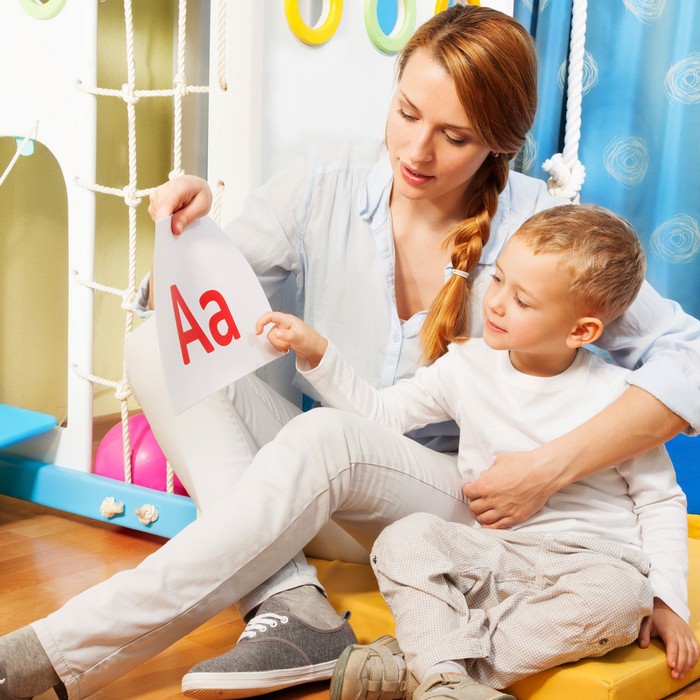
How to learn to read syllables?
At this stage of education, it is necessary for the child to understand how to combine individual letters into syllables. In the learning process, you can draw letters on A4 sheets or print on a printer, print letters with a stick in the sand. While walking in the fresh air, the child can also be shown letters, looking for associations with surrounding things and objects. For example, the roofs of neighboring houses - the letter "M", a circular satellite dish - "O".
How to teach a child to read syllables? Combine the two letters (consonant and vowel) and get a separate syllable. Reading must begin with easy four-letter words with paired syllables: uncle, pa-pa, ma-ma. When doing homework at home or walking in nature, we take the most common words and divide them into syllables.
With a child, you can play various games with words and letters. For example, write one or more easy words on paper so that the child puts them out of cubes with letters. You can write different words on the sheets, put them on the desk and stir them so that the child finds among all the sheets the word the mother set for her.

Tip 1. Until the child learns to read, you should not start learning individual letters, you need to learn only sounds.
Tip 2. If the child is still interested in letters, then introduce him to them in the context of a single word. Teach your child that the letter is usually found in words with other letters and rarely goes separately.
Tip 3. If a baby of four years of age does not show a desire to study, then do not force him to sit in class for a long time and do not require excessive perseverance. The duration of one lesson should be no more than five minutes.
Tip 4. At the age of five, it’s too late to teach the baby whole words, it is necessary to use a post-production technique, using, for example, Zaitsev’s cubes.
Tip 5. When the baby understands the method of sequential reading and independently voices the syllables, control the meaningfulness of the reading (the child must understand what the word read by syllables means). The main mistake of parents at the stage when the child utters the word read completely is the requirement to read the entire sentence. Do not forget that at this stage the child mechanically voices what is written. To understand the whole text or sentence, the child needs experience.
Tip 6. Do not miss lessons with the child, develop perseverance in the child, which will help him better prepare for school activities. It is necessary to read every day, for a maximum of ten to fifteen minutes.
Tip 7. Control the amount of information the child receives while reading, do not overload it. If the child resists during the lesson, do not set the goal to read to the end.
Tip 8. Be sure to praise the baby after class. He must feel that he is doing everything right and that his mother is happy and proud of him. In this case, in the next lesson, the child will try even harder and the effectiveness of the lessons will increase.
Tip 9. Pay attention to the size of the letters and their color, as children tend to get used to one font. A child may stop reading when he sees words written in a different font than what he is used to seeing daily.
Tip 10. Do not show aggression and do not yell at the child. If the baby does not understand your explanations, then the information has not yet been realized by him. Give your child time and take a break, do not put pressure on him.

Lesson Examples
Example 1. We study syllables from two vowels: UA, AU, IA. Read on open syllables (vowel and consonant), and then closed. For the lesson, it is necessary to prepare plate cards, for example, in the form of a house with several floors, where there will be a consonant in the left window, and vowels must be substituted in the right window:
Reverse exercise - in the left window you need to write a vowel letter, to which consonants are substituted for the formation of syllables.
In the lesson, the child must try to give meaningful words consisting of two letters, for example, he, ah.
Example 2. At the beginning, in the middle or at the end of the word, you should substitute the missing letter: _yba, _ode.
Example 3. In the word, you need to find the extra letter and cross out: mRama, three.
Example 4. A child must replace one letter to form a new word: varnish - cancer.
Example 5. The child needs to add the missing syllable in the caption to the picture. For example, the picture shows a bird and it says "bird".
Example 6. The child should put the “confused” syllables in the correct order: KA - LEI.
Example 7. From a set of syllables it is necessary to compose separate words.
Example 8. We study the proposals. When the child has learned to read short words, try to make sentences with him in two, and after of three words, gradually complicating the task. For instance:
The child’s sentences should be composed of light and familiar words: basic verbs and nouns, names of friends and family members. Suggestions should not be complicated so that the baby, after reading the last word, does not forget the first. At this stage of education, you should not force the child to read poetry, since it will be difficult for him to observe the necessary pace and rhythm.

Features of learning by age
How to teach a child to read at 5? At the age of five, the baby develops a need for independent reading, which is an important stage in intellectual and personal development. However, in order to translate the child’s desire to read into reality, parents with the baby will need to do a lot of work and learn a lot, starting with reading in syllables and gradually moving to whole words and sentences.
If at the age of four it was enough for a child to simply slide his finger through the pages and mechanically repeat memorized syllables, texts and words, then at the age of five the child is already trying to penetrate into the process of independent reading, begins to imagine the phrases and sentences read, and gets vivid impressions from interesting books. Reading at five-year-olds forms a rich internal-emotional picture of the world, prepares children for understanding complex logical chains and develops abstract thinking.
Therefore, at the age of five, it is necessary for children to select books that are simple in perception, which develop their curiosity, and also have many interesting illustrations for better understanding of what they read.
How to teach a child to read at 6 years old? According to modern psychologists, doctors, speech therapists, physiologists and educators, six years of age is considered the most favorable for reading, since at six years old the child actively develops attention, perception, thinking and memory. At the age of six, the child has a desire to learn, the baby no longer skips regular classes and is not naughty, reads books with interest and eagerly repeats the material he has read.
Many educators consider the six-year-old age to be the most successful for starting reading instruction, and recommend that parents use primers or large-type books for children in the classroom. During the lessons, parents need to read and swipe the pages with a finger, like a pointer, so that the child sees how adults read and repeat. Then you need to read aloud, moving the text with the finger of a child.
How to teach a child to read at 7 years old? At the age of seven, the child must be interested in the reading process itself, choosing books with good pictures, large print and interesting contents (adventure, detective stories, fairy tales, books about plants and animals). You can also come up with a story about a child and print it on sheets A4, supplementing the story with your own photos of the baby.
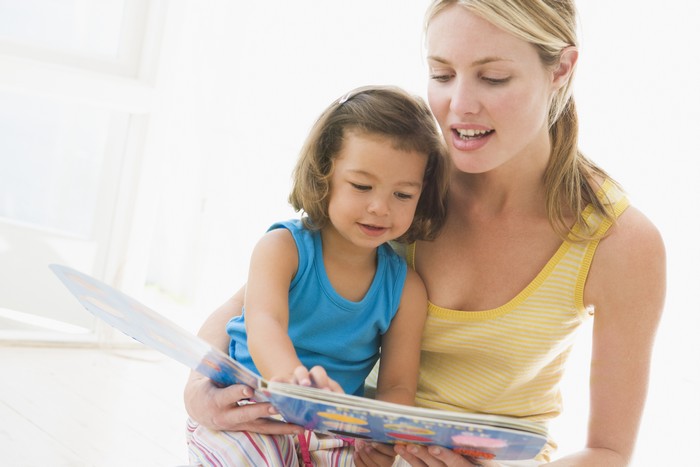
How to learn to read fast?
In order for the kid to learn to read quickly and consciously, to become a subject to follow in kindergarten and school, it is necessary to use the following techniques designed specifically to accelerate reading:
- Reading on time: you need to choose a small interesting text suitable for a child by age. Allow his child to read out loud and note the time, then to calculate the total number of words read over a set period of time. It is recommended to start with one minute. After counting words, the child must be given to read the text in the second round and again count the words. Each time, the reading speed will increase and the child will see his results.
- Highlights: reading should not only be quick, but also conscious, as well as fruitful. How to teach a child to read quickly? Ask your child to read the text as quickly as possible, and then ask him a series of questions. The child must answer them confidently, if you have not achieved the desired result, invite the child to read the text again.
- Parts of words: pick up fifteen long words and break them into several parts (for a start - into two). One half of the words must be written on some cards, and the other on the other. The task of the child is to fold the halves of the cards on their own and compose whole words.
Teaching a child to read is a long and complex process that will be successful if there is support, patience and attention from the child's parents.


